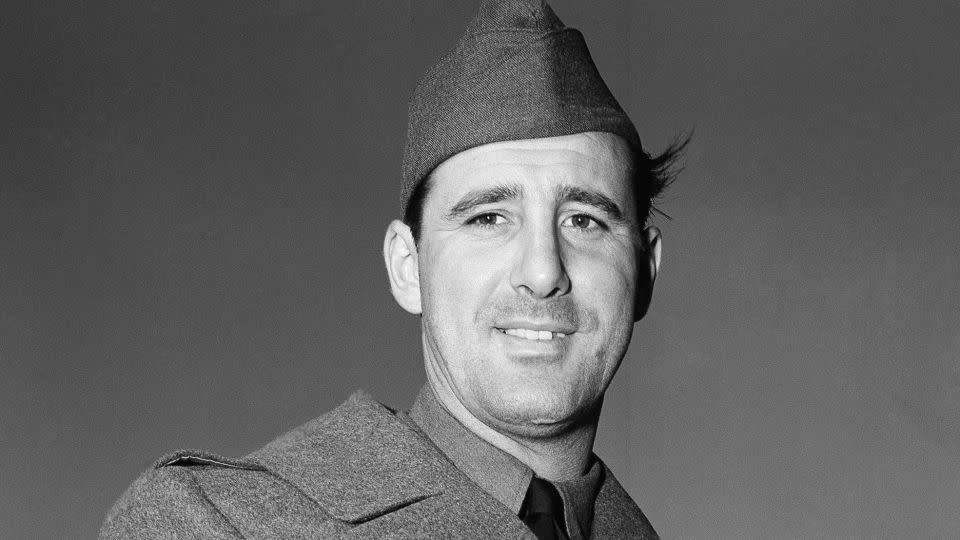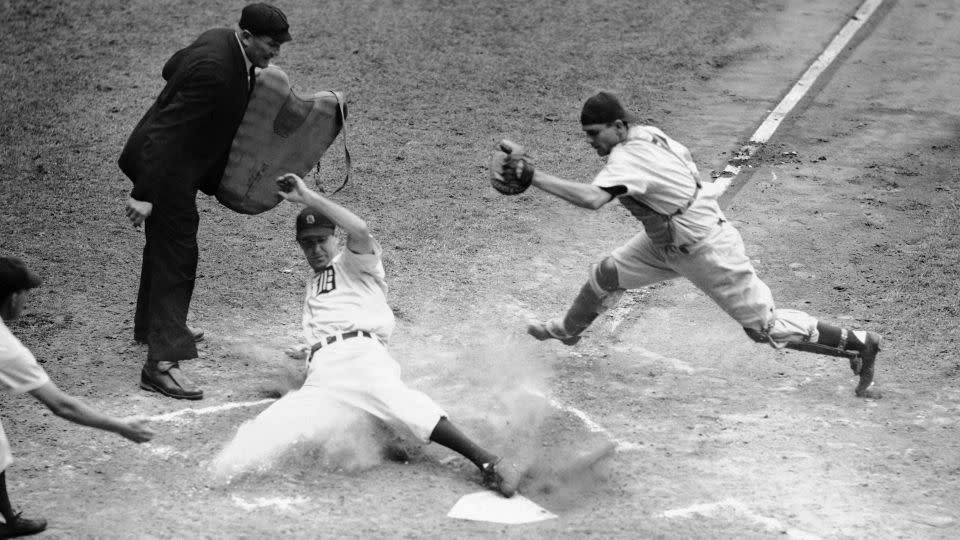An ode to perhaps the greatest Jewish baseball player on Passover
Today is the first full day of what was my favorite Jewish celebratory holiday as a kid: Passover, which commemorates the Jews escaping bondage in ancient Egypt.
This time for celebration helped to remind me of a conversation I had a month ago with my friend Noam in which I said, “Hank Greenberg would have been a top-100 baseball player had it not been for World War II.”
Noam expressed some skepticism, so I decided to dig into the numbers. It turns out that I undersold Greenberg; he was one of the greatest hitters of all time and gives Sandy Koufax a run at being the greatest Jewish baseball player of all time.
For those that don’t know, Greenberg was the first truly big Jewish sports star in America. He faced a lot of abuse at a time when Hitler was rising to power in Europe. Long before Koufax sat out for Yom Kippur, Greenberg did so for the Detroit Tigers during the 1934 pennant race. Yom Kippur is the holiest day on the Jewish calendar when adherents atone for their sins of the past year and don’t eat for the day.
Greenberg’s religion had already made front-page news when the Detroit Free press had, about a week earlier, run a large headline in Hebrew – probably the first time a major English-speaking newspaper ever did – when he played on Rosh Hashanah (the Jewish New Year). The headline was complimentary: “And so to you, Mr. Greenberg, the Tiger fans say, ‘L’shana Tova Tikatevu!’ which means ‘Happy New Year.’”
Greenberg deserved that much attention. He finished sixth in that year’s Most Valuable Player voting. The following year in 1935, he won the award, as the Tigers came out victorious in six games in the World Series. He would go on to win another MVP in 1940, before joining the armed services just a few games into the 1941 season.
Greenberg could have easily gotten out of the US Army after 1941 because he was honorably discharged, and Congress released those men 28 and over from service. However, he re-enlisted after Japan attacked Pearl Harbor in December of that year. Greenberg went on to serve 47 total months – more than any other major leaguer – including seeing overseas action.

Greenberg returned to the diamond in 1945, smashing two home runs in another World Series win with the Tigers, but he didn’t play a full season again until 1946. By that time, at age 35, he was well past most baseball players’ prime. That year, he still hit a major league leading 44 home runs; no one else even hit 40.
Greenberg would retire after the 1947 season, but not before being one of the first baseball players to offer encouragement to Jackie Robinson during his inaugural season. The 1955 World Series champion and Greenberg would remain friends until Robinson’s death in 1972.
The fact that Greenberg was a hero to young Jewish baseball fans (like my father), a great American and incredible human being is not under dispute.
What I fear gets forgotten sometimes is how good Greenberg was because he lost what was essentially four prime seasons to serve in the Army during the Second World War.
Greenberg remains one of only 10 baseball players to ever hit 58 home runs in a single season. He led the major leagues in home runs four times, which puts him inside the top 10 for this accomplishment. Greenberg likely would have come close to, if not hit, 500 home runs had his career not been interrupted by the war. He almost certainly would have hit the 400-mark.
Just three players hit 500 home runs prior to 1960 – and only 28 have through 2024. Just six players hit 400 home runs before 1960, while Greenberg’s 331 were still good enough for 12th prior to 1960. Heck, it was a good enough tally for 50th before the 1990s, when performance-enhancing drug use became widespread in MLB’s Steroids Era until the mid-2000s.
His 15.69 at-bats per home run currently ranks 32nd of all-time.
But what made Greenberg truly great wasn’t that he merely hit for power; he got on-base at an impressive rate.
Greenberg’s on-base percentage was .412, which ranks 25th (as of this writing) for players with at least 5,000 plate appearances. He ranks 15th for those who played in the last century.
Indeed, he’s one of only 21 players ever to hit at least 300 home runs and have an on-base percentage of at least .400.
Greenberg didn’t just hit home runs and get on-base. He hit plenty of doubles too. Greenberg twice compiled at least 50 doubles in a season, which were the two times he led the league in the stat.

Not surprisingly, his on-base plus slugging percentage (OPS) – a stat that combines getting on-base with hitting for power – was out of this world. His career 1.017 is sixth all-time for anyone with at least 5,000 plate appearances. If you adjust for the ballparks he played and the fact that Greenberg played in a hitter-friendly era, his OPS+ (which is OPS adjusted for external factors, designed to provide a context-neutral number) was 159, or 59% better than league average, and ranks 15th all time among those with at least 5,000 plate appearances.
Bottom line: Greenberg is one of the greatest hitters ever to grace America’s pastime.
The only real weakness in Greenberg’s game was that he didn’t contribute defensively because he played first base (a less demanding position) for most of his career.
There is, however, a stat that combines offense and defense, while also taking into account that Greenberg missed out on a lot of potentially good years because of his time in the army. It’s called seven-year peak wins above replacement, or WAR7 (yes, there are a lot of very specific stats used in analyzing baseball, it’s part of what makes the sport so great).
Wins above replacement is a statistic that tries to consider every part of a player’s game, while the seven means a player’s best seven seasons. For someone like Greenberg, the seven part is key because of his time missed due to his military service.
Greenberg ranks 62nd among every position player on this metric since major league baseball began way back in the 1870s, according to Baseball-Reference (and different outlets compute WAR7 slightly differently). Meaning he is unquestionably one of the all-time greats, even taking into account his defense.
And while I would usually advise against comparing position players and pitchers on WAR7 because they are computed very differently, I can’t help pointing out that Greenberg’s WAR7 (46.5) is very similar to Koufax’s (46.0). The “Left Arm of God” had an abbreviated career, like Greenberg, though Koufax’s was, somewhat ironically given his nickname, because of arm troubles.
I think most would agree that, whenever you can even be mentioned in the same sentence as Koufax, you did something very right.
In Greenberg’s case, he did a lot right both on and off the field.
For more CNN news and newsletters create an account at CNN.com

